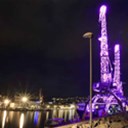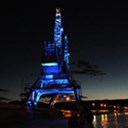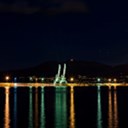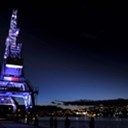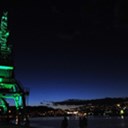A LOVE PAIR OF HARBOUR CRANES AT THE MAIN BREAKWATER
You have never seen a more unusual pair in love. The relationship started in 2013 when it was sealed by the City of Rijeka and the Port of Rijeka Authority at the main breakwater, a place where both cranes had moved around for years and it had seemed that they would just leave quietly, at a respectful age. But destiny wrote a story that neither of them had ever dreamt about, being busy with the extreme load of everyday work. Two harbour cranes, produced in 1948 and 1947 respectively, with a capacity of five tons and delivered by the Hungarian manufacturer Ganz, remain at the breakwater thanks to their renovation as a monument to the port activities in Rijeka. The impressive story of the port of Rijeka could not be told without dozens and dozens of huge, powerful harbour cranes resembling the conserved pair. These two cranes are not the oldest ones that have worked in the port, nor the strongest, but they are the most representative of the port’s activities. Rijeka’s inhabitants have been watching them in the port since they were children and consider them part of their urban and emotional landscape. This type of crane first appeared in the late 1940s on the docks in Budapest where it replaced the manual transport of grain cargo and increased it. From there it spread to Orlando’s wharf in Bratislava port, the main breakwater and elsewhere. The cranes were operated by generations of the city’s port workers, shifting millions of tons of cargo from ships to land and from land to ships. Retirement here refers only to the workers and not to the cranes. Still, in 2010 the reference for the two Ganz cranes changed. Machines also get old. Or at least they would if only the people in Rijeka had not thought about it like this: Rijeka without harbour cranes, how is that possible?! It took three years to renovate the cranes and today they are a valuable showcase of the city’s industrial heritage. They are located in their natural environment, on the breakwater that was once a closed-off port facility and today an exclusive promenade. Its attractiveness at night has been doubled by decorative lightning. Lights in various colours and intensities have been placed on each crane. The colours are set for public and religious holidays and special days so each holiday has its own colour, while on other days the colours change continuously. By doing so, they change the panoramic nocturnal appearance of the city. Night time is the perfect time for lovers. This is well known to the unusual couple in the port who are so engrossed in each other that they will not mind if you visit them and record their night happiness with a camera.
